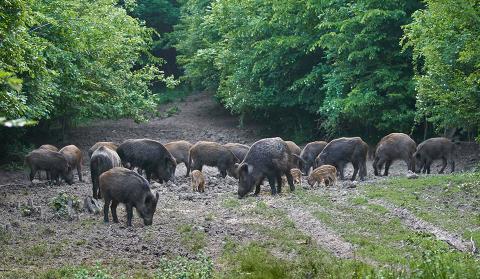Heath Wood
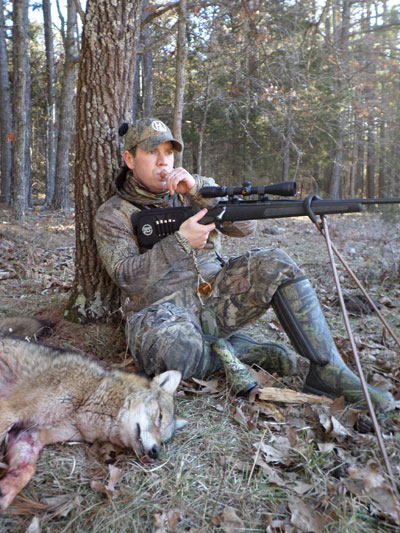 The sport of predator hunting is arguably the fastest growing hunting sport today. It is a sport that can be performed virtually all year, with its primetime occurring during the months in which there is not much else to do. Not only is predator hunting a sport that is enjoyable, it is also a beneficial step in many hunter’s wildlife management efforts. Wildlife management is the main reason that many hunters are starting to take an interest in predator calling. With this upturn in interest, it is by no surprise that a lot of new hunters, specifically young hunters, are seeking to learn how to call in coyotes, bobcats, and foxes. One unfortunate result of modern technology is that newcomers don’t learn how to call. With electronic callers, as well as the availability of e-calls, many new hunters never learn to use hand calls. They are missing out on the benefits produced when they call themselves or with a combination of an e-call in order to get more predators.
The sport of predator hunting is arguably the fastest growing hunting sport today. It is a sport that can be performed virtually all year, with its primetime occurring during the months in which there is not much else to do. Not only is predator hunting a sport that is enjoyable, it is also a beneficial step in many hunter’s wildlife management efforts. Wildlife management is the main reason that many hunters are starting to take an interest in predator calling. With this upturn in interest, it is by no surprise that a lot of new hunters, specifically young hunters, are seeking to learn how to call in coyotes, bobcats, and foxes. One unfortunate result of modern technology is that newcomers don’t learn how to call. With electronic callers, as well as the availability of e-calls, many new hunters never learn to use hand calls. They are missing out on the benefits produced when they call themselves or with a combination of an e-call in order to get more predators.
As with anything new, when first learning how to use calls, it takes practice. It also takes knowledge of what sounds mean, how they are supposed to sound, and the timing of when they are supposed to be used when in the field. When using an e-caller, hunters do not obtain the knowledge that is needed to improve as a hunter as they would if they were using a hand call. Even though I use an electronic call on 90 percent of my hunts, I always have hand calls with me as well. It’s how I learned how to call predators, and I am a true believer that hand calls have their benefits when calling. Listed below are 5 reasons that I believe hand calls will always be around even in the ever-changing, fast-paced world of technology and electronic callers.
It is important to explain that there are many different shapes and sizes as well as different types of hand calls for predator hunting. There are distress calls that can be either an open reed or closed reed call, or some coaxer calls that can be squeezed to imitate sounds such as a mouse squeak. Different shapes and sizes determine the sounds. These can be rabbit in distress, rodents, birds and even fawn in distress sounds. Hand calls can also be used to make a wide range of coyote vocals. Again, they can be open reed or closed reed, and different shapes and sizes determine what sounds can be made such as coyote howls, barks, whines, and distressed pup sounds. There is also what is known as a diaphragm call. This call is technically used in one’s mouth. However, I consider it a hand call because it is still manually used by the hunter to make a sound.
1. Self-Accomplishment
One of my favorite things about using hand calls is the pride that one feels when calling up a predator on his or her own. After spending a lot of time practicing, and then witnessing that practice pay off when one is able to sound authentic enough that it results in fooling a predator, is a one-of-a-kind feeling of accomplishment for a hunter. This is also a great way to introduce a newcomer so that they will want to continue hunting in the future. Self-accomplishment is also what I think brings back a lot of veteran hunters to hand calls. Some of the most successful predator hunters seem to spend several years hunting with a combination of e-callers and hand calls, only to fall back to using hand calls the majority of the time due to the rush, the challenge, and again the pride of being able to fool a predator on his or her own.
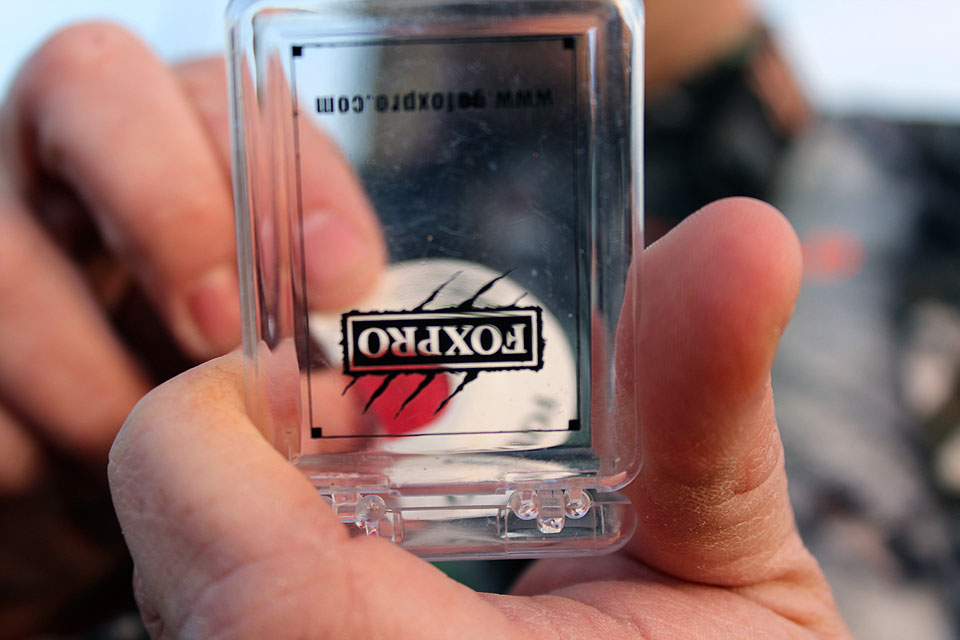
2. Beginners
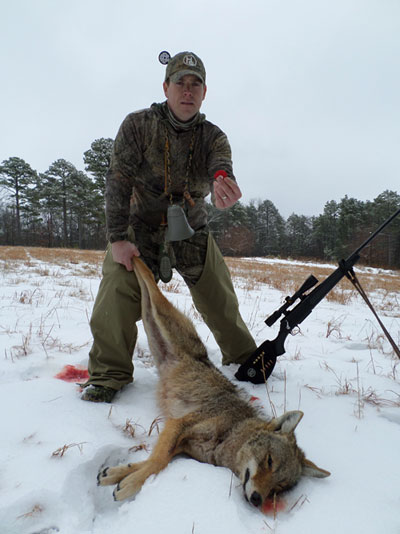 Introducing a newcomer to the sport of predator calling with hand calls can be much easier than one would think. For example, most turkey hunters learn how to call by beginning with a box call or slate call, because it is the easiest to learn how to use. Once mastered, they will continue learning with a diaphragm call. The same goes for predator hunters; they start off with a closed reed call because it is the easiest to learn how to use, then continue with an open reed call. Once a hunter learns to make the distress sounds, they move on to coyote vocals. This is especially true when howling. Many hunters will learn how to howl with an open reed call, and once they have learned with the open reed many will continue with using a diaphragm call. As mentioned earlier, knowing how to imitate the sounds on one's own abilities and skills develops a personal accomplishment that fuels the passion as a hunter.
Introducing a newcomer to the sport of predator calling with hand calls can be much easier than one would think. For example, most turkey hunters learn how to call by beginning with a box call or slate call, because it is the easiest to learn how to use. Once mastered, they will continue learning with a diaphragm call. The same goes for predator hunters; they start off with a closed reed call because it is the easiest to learn how to use, then continue with an open reed call. Once a hunter learns to make the distress sounds, they move on to coyote vocals. This is especially true when howling. Many hunters will learn how to howl with an open reed call, and once they have learned with the open reed many will continue with using a diaphragm call. As mentioned earlier, knowing how to imitate the sounds on one's own abilities and skills develops a personal accomplishment that fuels the passion as a hunter.
3. Howling
As a predator caller advances their skills, they will find that combining their ability to call with both hand calls and electronics is when they will began to see a better success rate. I remember several years ago when I first began the calling tactic of howling at the beginning of my calling sequence with a diaphragm call or an open reed howler. Performing this sequence is when I first noticed my success rate take a dramatic increase. Before 90 percent of my stands, I will begin with a soft subtle howl. After a few minutes of howling, I will begin my distress sounds such as a rabbit on the electronic caller. By combining the two callers, I am able to paint a more realistic situation in a coyote’s mind, which triggers their territorial instincts making them respond faster as well as more often. For example, if a coyote is by himself and hears a distress sound, sometimes his curiosity isn’t there. However, by adding a few howls before, he now knows that there is another coyote in the area that he may want to hunt, fight or breed with. When a coyote hears another coyote in the area, followed by the sound of a free meal, it turns into a race to see who can get there first.
4. Add Realism by Adding Inflection
Even though e-calls can produce a realistic sound every time it is used, a hunter can add even more realism with inflection by using hand calls. Inflection is the variation of pitch when calling. Hunters can do this by using more air or less air to produce sound. To make a realistic sound when making a distress sound, add inflection for more realism that cannot be produced with electronic calls. By adding realism to a hand call, one can fool some of the weariest predators to come into range.
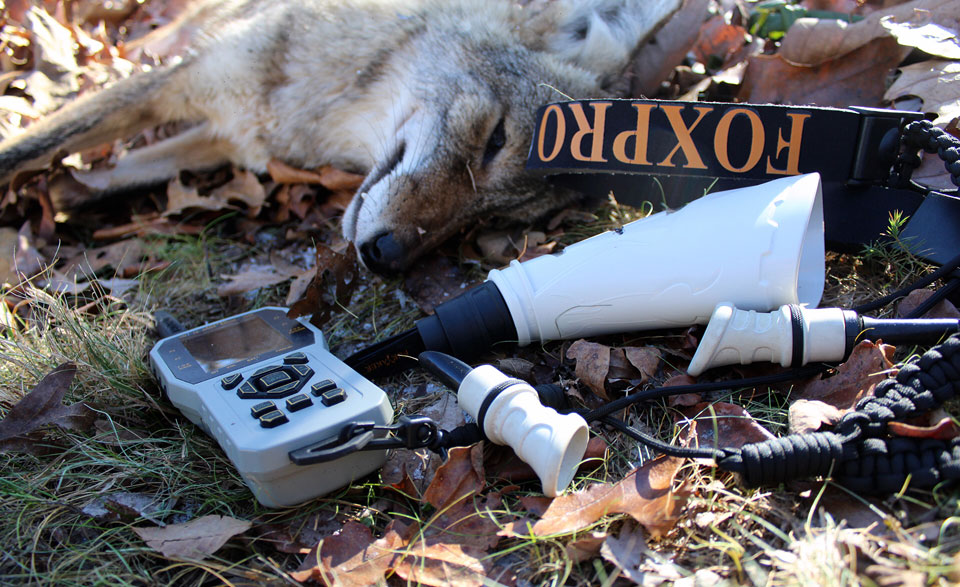
5. Backup
The last reason hand calls will always be in predator hunters’ pockets is that of having a backup plan. There is nothing worse than being in the field hunting only to have the batteries die or have a malfunction on the e-caller. Predator callers are known to hunt some of the most harsh weather conditions and these conditions result in problems with e-callers. If one will carry a variety of different types of hand calls with him or her, there will never be a time in which one has to cut a hunt short due to not being able to call. Some hunters will say that hand calls will freeze up fast, making them unusable as well. However, when hunting tough winter conditions using a diaphragm call or an open reed call one will rarely have a hand call freeze up compared to closed reed calls. If a hunter will keep a variety of calls on hand, the risk of having no way to call will never be a problem.
Using hand calls for predator hunting is a must in order to become a more versatile hunter. The great thing about hand calls is that they are inexpensive, easy to use and they don’t take up much room. In fact, I usually have two or three hand calls on a lanyard around my neck every time I am in the field. When something has been around for many years, it is usually due to the simple fact that it works. The same goes for using hand calls when predator hunting. In an era in which electronic calls are more advanced than ever, there is still a purpose for hand calls to make a better predator caller.














